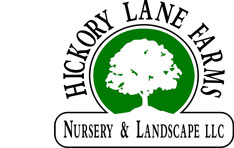Pretty white flowering trees
Finally I can say……………….happy spring!
Did you notice all the white flowering trees in the fields around Marysville and Columbus in late April? The upright oval shaped ones in vacant fields around cities and subdivisions. I’ve watched them for years. They never used to be there. They are weed pears sown by the birds eating the fruits of ornamental pears.
The state of Ohio recently outlawed ornamental pears. They passed legislation making it illegal to plant about 20 different species of weedy plants from herbs to trees. With the pears they made an exception to not outlaw them until 2023. Because nurseries have so many of them in production, they are giving them a chance to sell them first. Sounds kind of counterproductive doesn’t it? My take on invasive plants like pears, honeysuckle and multiflora rose is that we can outlaw them all day long but they aren’t going anywhere. The horse is already out of the barn. Of course it’s good to inform people and discourage planting weeds but there are so many now invading our vacant lands that are still there, still spreading and unless a bug or disease takes them out……….will be with us forever.
How does this happen? You may recall the “Bradford” pears that were popular back in the 70s and 80s. They were touted as the perfect street tree because they had an upright shape. They are dense when they are young, have glossy foliage, white flowers and nice fall color. What’s not to like………right? Well the fact that they were dense headed when young led to top heavy trees when they got older with a tight branching habit which resulted in storm damage from ice and snow load. They’d split right down the middle and fall across the street. Soooooo…………….the cities stopped using “Bradford” pear and the nurseries developed other varieties which were not quite so densely branched. But these “improved” varieties didn’t turn out to be much better and then we began to see the seedlings popping up everywhere in vacant fields.
The average citizen had no idea this tree was a problem so they’ve been very popular in the nursery business. Indeed, probably the most popular tree, planted in every new development. Hence, we’ve got the weed trees all around the suburbs of most cities. It’s never a good idea to overplant a species just in case a problem occurs later. Just think about the loss of the American Elm, Chestnuts and more recently, the ash trees. Diversity, diversity, diversity is just as important as location, location, location!
A tree is a long term proposition. Give it some forethought!


Comments are closed.